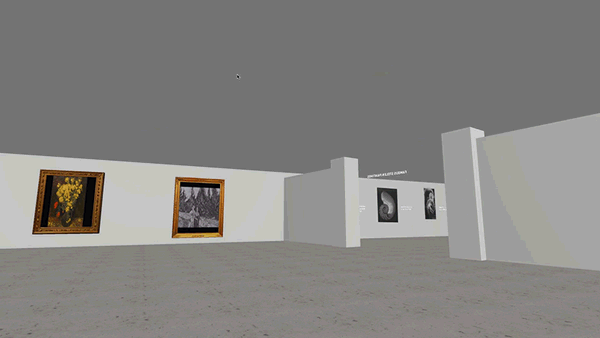On March 18, 1990, two thieves disguised as Boston police officers walked into the Isabella Stewart Gardner Museum, handcuffed the guards on duty, and walked out with thirteen artworks valued at $300 million. The haul included pieces by Rembrandt, Vermeer, and Degas. The works were never recovered, but Ziv Schneider is including them in an upcoming museum exhibition nonetheless.
Schneider, a student in NYU's ITP program, is the creator and curator of The Museum of Stolen Art, a virtual space dedicated to artworks "that cannot be viewed physically anywhere in the world." It's a museum that's only possible in virtual reality.
The virtual museum was designed to look just like a real one. The works hang on spare white walls, surrounded by ornate frames. An audio guide walks visitors through the halls. For Schneider, recreating the traditional museum environment was a chance to restore some dignity to these stolen works, which often just exist as thumbnail images on FBI and Interpol websites. "I wanted to get the viewer to see the pieces in context, the same way they might in real life," she says.
Schneider's planning three opening exhibitions. One is dedicated to famous stolen paintings, including those from the Isabella Stewart Gardner Museum heist. The other two exhibits focus on art looted from Iraq and Afghanistan. Following the U.S. invasion of Iraq in 2003, nearly 14,000 objects were plundered from the Iraq Museum, one of the largest thefts of art in history.
With these collections, Schneider hopes to remind people how vulnerable physical artworks can be. We often reflect on the human toll of the conflicts in the Middle East, but Schneider's museum reminds us that culture can be a casualty, too. In Afghanistan, more than two thirds of the National Museum's artifacts were lost or destroyed as a result of the Soviet and Taliban occupations. "I think these issues of cultures disappearing and suffering from war needs to be addressed," Schneider says. She hopes to open the museum to the public in coming months.
Today, this sort of thing makes for a novel design school project. But it's a compelling example of what could be totally commonplace in years to come, as virtual reality headsets proliferate. We know VR will transport us to impossible worlds---exotic planets and geometric landscapes and classrooms where we inhabit dolphin bodies. The Museum of Stolen Art is a reminder that there are much more prosaic versions of "impossible" worth exploring.
Thanks to Prosthetic Knowledge for the find.
